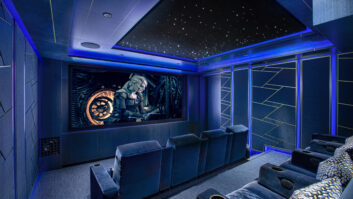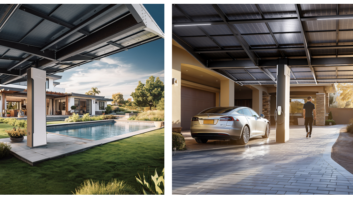The economic model of the custom-install business is changing, and the CEDIA Expo is changing with it.
Percentage growth for many installers has moderated into the single-digit range after a decade of double-digit gains; many long-established installers are feeling margin pressure as a result of proliferating competition; and new technologies pro-mise to deliver at least some of the benefits of distributed-A/V systems to the do-it-yourself market.
With these changes in mind, the Sept. 8-12 Expo will add more business-oriented classes to its seminar program and fine-tune the classes to provide more “heavyweight” information and less “personality-based” anecdotal material, said CEDIA’s president Ray Lepper. Next year, as part of its stepped-up business-education focus, the association will begin offering professionally developed business and technical courses based on a core CEDIA-developed curriculum, he said. The courses will be uniform and delivered by instructors trained to teach specific courses, he said.
Exhibitors will confront market changes at the Expo by launching products that they contend will expand the custom-install customer base to tract-home owners. Many of the products also promise to make installation less labor-intensive and less trouble-prone, potentially increasing installers’ profitability.
Some systems will be positioned as retrofit-friendly to expand the market beyond new homes; other systems will leverage the volume production of Ethernet and Web standards to move media-distribution and home-control systems further into the mainstream.
Said Will West, co-founder of start-up Control4, of the challenges faced by installers: “Change your business or have your business go away.” (See story, below right)
One thing that doesn’t seem to be going away is the CEDIA Expo, which is bursting at the seams. The association will expand exhibit space to about 450,000 gross square feet from last year’s 426,000, largely by making “more efficient” use of hallways than it did last year and by turning a major ballroom previously used for classroom training into exhibit space, said Expo chairman Bill Skaer. More than 470 companies, up from last year’s 405, will exhibit, he said.
As of mid-August, attendee preregistration numbers were running ahead of last year’s numbers, increasing the potential for attendance to exceed last year’s 22,500.
Crowding will also afflict next year’s Indianapolis show, but in 2006 the show moves to larger facilities in Denver.
Growing attendance, in part, reflects growth in the number of installing companies. “It seems like the number of installers is growing faster than custom demand,” CEDIA’s Lepper said. “It’s harder to get business because of the competition,” he continued. “The business is fragmented with a lot of little players, and a lot of them stay in business for only two to three years because they’re not well-capitalized or haven’t had the time to develop into a professional company. That makes it difficult for serious companies to grow.”
The competition is fierce, he continued, because established companies and newcomers are mainly targeting the same customer base: buyers of expensive new homes.
The proliferation of installers might explain the disparity between the single-digit growth rates that many installers are experiencing and a Parks Associates estimate of 19 percent growth in consumer-level custom-residential revenues to $5.1 billion in 2003. CEDIA’s Lepper points out that he doesn’t hear many installers boasting about 25 percent annual gains like they did in the 1990s through 2001. “People are happy with 5 to 10 percent,” he said.
Although Lepper estimates industry revenue growth this year is matching 2003’s mid- to high-single-digit gain, the growth rate is a welcome turnaround from 2002. That’s when revenues went flat or shrank, according to many suppliers and installers. “Last year, we were still suffering some of the dotcom hangover,” Lepper said. “Now the funny money is gone, and we’re finding what the true demand is.”
Whatever the aftereffects of the dotcom implosion, the stock market bubble or the terrorist attack of Sept. 11, 2001, the market’s prospects are bullish, Lepper said. Awareness of custom-installation options is rising among consumers and home builders, and the industry is reaching second-time buyers who enjoyed custom-installed systems in a previous home, he said.
In addition, falling plasma prices will give installers a margin lift, he contended. With low-margin plasma screens accounting for a smaller share of a home theater budget, the overall system margin will rise, he said.










